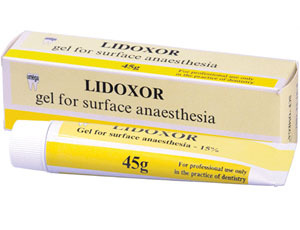 Lidoxor is a medicinal anesthetic for external use, the main active ingredient in the composition is lidocaine.
Lidoxor is a medicinal anesthetic for external use, the main active ingredient in the composition is lidocaine.
This tool is widely used in dentistry for application anesthesia of the oral mucosa.
The lidocoxor has a very strong disinfecting effect, has a rather good smell and a pleasant taste, which does not cause unpleasant sensations.
Contents
- Composition and Form Release
- Pharmacological properties
- Relevance of use and contraindications
- Method of use
- Spray VS gel
- The cost of the preparation and its analogues
Composition and Form of Release
The main component that is a part of the drug is lidocaine, is known for its rapid and deepanesthetic effect on the treated area, due to which all unpleasant and painful sensations are completely excluded during dental procedures. In addition, the composition of the drug added flavor, creating a pleasant smell.
Complete composition:
- distilled water;
- sorbitol;
- Thymol;
- glycerol;
- menthol;
- xylitol;
- 2.6-dimethyl;
- aromatics;
- sodium benzonate;
- lidocaine - 15%.
In addition, there are additional ingredients in the composition, namely: saccharin, due to which the drug is very pleasant to taste, extracts of chamomile and yarrow.
Preparation Lidoksor is produced in two forms - gel and spray, while its pharmacological action remains the same, only the method of application changes. The spray is packaged in a capacity of 30 ml, which must be stored in dry and cool rooms.
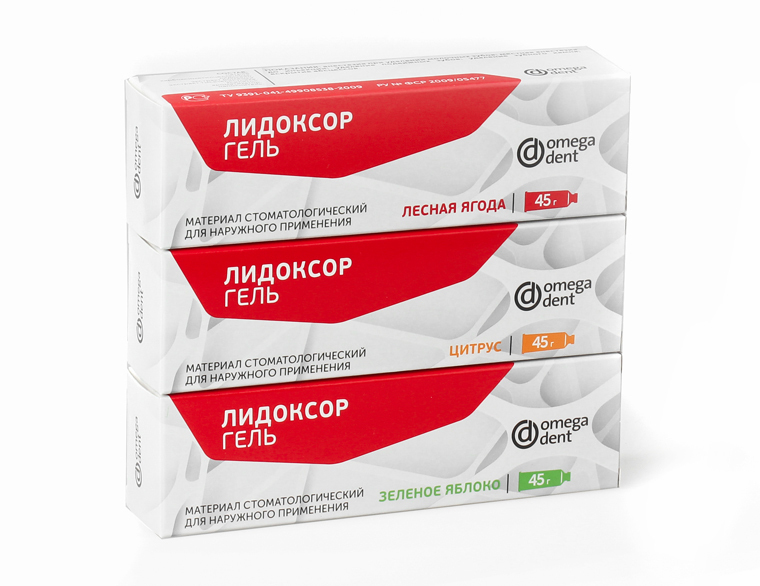
The gel is produced in tubes with a mass of 45 g with different flavors.
Pharmacological properties
The drug has a fast anesthetic effect, its action is sufficient to exclude pain and any discomfort during dental procedures.
This result is due to the blocking of pain impulses, which are transmitted along the nerve endings. The effect of the application will be noticeable within a couple of minutes after application of the drug to the mucosa and persists for 10-20 minutes, during this time the dentist has time to inject a stronger anesthetic, through an injection into the gum.
The lidocox is necessary, just in those cases when the patient does not want to experience unpleasant sensations during the injection of an anesthetic drug.
With this method, you can avoid unpleasant sensations during the injection. This is especially true for children who are very afraid of injections, and in any pain syndrome immediately begin to get scared and cry, which greatly hinders the work of the dentist and spoils the psyche of the child.
Relevance of prescription and contraindications
Indications for use of anesthetic Lidocsor: 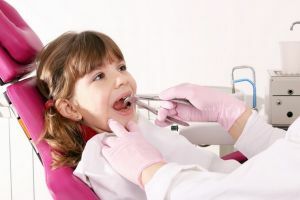
- tooth extraction;
- local anesthesia of the mucosa before injection;
- removal of calculus;
- superficial analgesia in the removal of milk teeth;
- opening and removal of parodental abscesses.
Before using an anesthetic, make sure that there is no allergic reaction to lidocaine. A similar condition can manifest itself in the form of dermatitis, urticaria, and in heavier forms in the form of edema, anaphylactic shock, asthma, and Quincke's edema.
It is very important to make an allergic test before carrying out the anesthetic procedure, especially for children, they may also have an allergic reaction to lidocaine. This is the only contraindication to the use of the drug.
How to use
The spray and gel have a different consistency, and therefore they are applied in different ways.
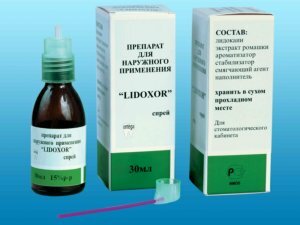 When using the gel, the surface of the mucosa should be slightly dried, squeezed out a certain amount of the drug from the tube and spread the necessary area.
When using the gel, the surface of the mucosa should be slightly dried, squeezed out a certain amount of the drug from the tube and spread the necessary area.
For maximum effect, you can apply the gel on a cotton swab and wrap it in the prepared area. The tampon can be attached to the right place and left for a minute, this is done to get an even faster and stronger result.
The spray is used by a different method, but very similar. The first step is to drain the mucous membrane of the mouth. Further, direct the nebulizer to the required area and press the valve several times, thereby, the zone will be exposed to the action of the anesthetic.
Spray VS gel
The main advantage of Lidocsor is that it does not cause tingling or burning sensations on the mucosa. Therefore, the drug can be used by patients who are allergic to benzocaine, because it is not in this facility, and therefore their health is not threatened.
It should be noted that each of the forms of the product has its advantages and disadvantages, namely: the gel has a better connection with the tissues, due to which it does not drain from the necessary zone, but is securely fixed on it, the spray can not boast of it.
Unlike the spray, when applying the gel, there is no scale spraying of the anesthetic in the oral cavity. It is applied strictly to the required area, does not cause unpleasant sensations in a person.
That's why most dentists prefer a gel-based agent, not an aerosol.
Today I took my eight-year-old son to see a dentist, he had a bad toothache at night. In the office, the dentist suggested using the Lidocoxor so that the child did not feel the injection of an anesthetic and was not afraid of injections.
Of course, I agreed, and not in vain. Gel, although not the cheapest, but after a few minutes the remedy worked, and the child did not even notice how the injection was done to him, and the tooth was removed. Now he is not afraid to go to the dentist.
Maria Rogeluk
About modern anesthesia in dentistry:
The cost of the drug and its analogues
The drug is not too expensive, but not the cheapest, so the average price in Russia is 500 rubles for a tube of gel weighing 45g and for 30ml of spray Lidoksor.
For this money, patients receive absolutely painless reception at the dentist, as the drug completely removes all painful sensations when entering an anesthetic injection.
The most popular analogue of this drug is Kamistad, this remedy also relieves pain and inflammation in the oral cavity. Very 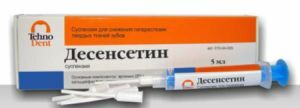 is often used in dentistry for the anesthesia of the mucous membranes. Produced in the form of a gel with a yellowish tinge.
is often used in dentistry for the anesthesia of the mucous membranes. Produced in the form of a gel with a yellowish tinge.
Another analogue is the desensitizing gel Desensetin. It is also used before anesthesia. Has no side effects, so it is allowed to use when working with children of different age groups.
